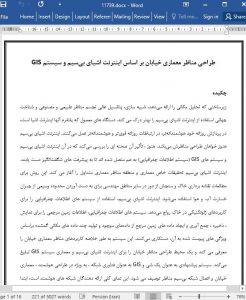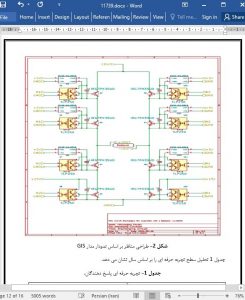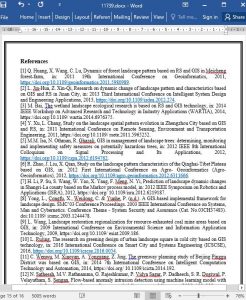Abstract
An infrastructure that provides geospatial analysis, better understands simulations, great potential for visualizing natural and artificial landscapes, and the universal recognition of the use of the Wireless Internet of Things. Everyday devices, whose platform is the Internet of Things, will be smarter in their daily processing, richer in their daily communication, and smarter. The Wireless Internet of Things still wants its landscape design. Still, its impact is already looking at the scene where the Wireless Internet of Things and GIS (Geographic Information System) systems were connected to make incredible advances. It opens up architecture-specific research and the usual architectural landscape area. It can be used for soil mapping studies and can be used for remote sensing in other engineering areas to obtain a wide range of weather compensation. It encourages the use of geographic information systems for geotechnical applications in soil. Geographic information systems can manipulate georeferenced information to be displayed, store, assemble and create georeferenced data from existing data, and generate multiple missing spatial data based on the attributes attached to it. The system briefly introduces street architecture landscape applications and promotes a street landscape design environment for Wireless Internet of Things and GIS system architecture. The proposed system is described as a thing and GIS as network technology, especially in smart design, street architecture and landscape wireless network connectivity. This is an overview of smart network providers, first to help explore some essential landscapes, equipped with wireless internet and geographic information systems, and how it is used in street architecture.
1. Introduction
The Wireless Internet of Things helps the interface between people and systems to create internet-based solutions. Based on the Things Internet concept, various "smart" applications on the internet can be set up in different human life areas, such as agriculture and forestry. Many devices connected to the overall network can automatically monitor real-time management by remote control processor to perform routine tasks on "things". This concept allows sensor access and transparency to create an open environment in a secure environment, while cloud quality plays an essential role in acceptance. Many of these experts have increased and pointed out the amount of data collected and the tendency for mountains and condensation to better analyze remote clouds that do not reveal data sources as close as possible. As such, regular sensors inevitably make independent decisions in some cases. They process the collected data and processes it and sends only the "top" most important information. It can be replaced by a device that can be called the most complex and intelligent terminal.
5. Conclusion
Landscape design is integrated with feature-detecting, driving, nearcommunication-driven Wireless Internet of Things and (Geographic Information System) GIS and seamless backgrounds and new features depicted on the internet, enabled by access to new, vision-rich sources. The evolution of street architecture and landscape design relies on user creativity when designing new applications. The Wireless Internet of Things is a superior new technology for influencing new data delivery areas based on the computing resources needed to create evolutionary landscapes and revolutions. Unlike traditional methods, the model considers the physiological parameters of soil, climate and consortium plants to calculate the irrigation schedule in the drip irrigation system, making it possible and influencing factors. It is possible by considering the comprehensive accounting of these parameters that enables landscape irrigation norms to make timing and scientific decisions on drip irrigation systems’ operation. This solves the problem of using phytosanitary equipment and monitoring equipment and weather station drip irrigation systems to carry out irrigation programs that will reduce the need for special training and lead to the development of an expert system.











